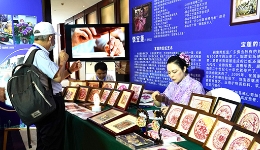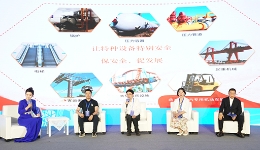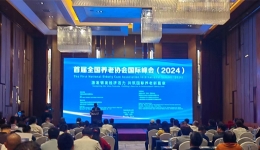[Editorial Review of Workers' Daily]
Original title: Make the original ecological ancient town on the vast land "fragrant"
Worker's Daily - Cheng Lu, commentator of China Industrial Network
These vivid practices let local residents and tourists not only feel the past years, but also share the beauty of modern life at a glance at the millennium old town, revere history in the cultural infiltration, cherish the millennium home, and feel the feelings of home and country.
With the rise of the national tide, the ancient treasure town tour has become a popular option for many people on weekends or small holidays. In the Yangtze River Delta, there are 80 ancient towns listed in the list of Chinese historical and cultural towns, accounting for more than 25% of the total in China. The ancient towns in the Yangtze River Delta "out of the circle" mainly rely on "three kinds" - beauty, architecture and performance. Recently, the reporter of the Workers' Daily followed the theme of "cultural trip to China" to the ancient towns and historical and cultural blocks in Jiangsu and Zhejiang, and found that the old blocks of ancient buildings have vivid practice and innovation experience in promoting the inheritance and development of Chinese excellent traditional culture, and the cultural genes carried by treasure towns are being activated.
"Water in Spring and Autumn, town in Tang and Song Dynasties, buildings in Ming and Qing Dynasties, modern people" is a summary of the historical evolution of Xitang Ancient Town, and it is also a feeling that many people like walking in the ancient town. In an original ecological ancient town with a smoky atmosphere, visitors can walk into history, culture, life, taste the local plants and trees, bricks and tiles, tune in and tune in, appreciate the historical relics, traditional culture, styles and customs that remain intact, experience the integration of "slow past" and "modern trend", so that the body and mind can be comforted by mountains and rivers and nourished by humanity.
The ancient town bears nostalgia, and many people have special memories of small bridges, flowing water, traditional houses, ancient buildings, old factories and other landscapes. However, in the protection and development of ancient towns in recent years, many places have also done a lot of regrettable things, such as demolition, demolition of real buildings and construction of fake ones. Some historical buildings and historical sites are out of control and disrepair, and some ancient towns are homogenized, hollowed out and over commercialized. In some places, the blind construction of the imitated ancient town, which strives to be the next "Wuzhen" and another "Zhouzhuang", has been gradually declining recently. Many imitated ancient towns that only rely on the imitated landscape to sell high priced tickets are being abandoned by young people.
The historical and cultural heritage left by our predecessors, including cultural relics and historic sites, historic and cultural cities, towns, villages, historical blocks, historical buildings, industrial heritage, and intangible cultural heritage, carries the genes and blood of our nation, and contains the great creation, outstanding wisdom, and common memory of the people for thousands of years. Only by truly and completely protecting them can they be well inherited and developed. The ancient town is not only the material carrier of history and culture, but also the important space carrier of local residents' production and life. The ancient buildings, people and town are here. As the whole society has significantly improved its understanding of the excellent traditional Chinese culture, and has increasingly deepened its understanding of the important values contained in historical and cultural heritage, the protection of ancient towns has demonstrated the vivid practice of creative transformation and innovative development of ancient town culture from the protection of forms, buildings, streets and alleys to the protection of people's lives. Those ancient towns that retain historical buildings, original residents and old styles are radiating new charm of "wonderful town".
In Suzhou, Tongli Ancient Town adheres to the principle of "minimum intervention", maintains the style and pattern, prevents excessive repair, improves the living environment, retains the original residents, and preserves the life breath of people in the ancient town of Suzhou. In Yixing, the historical and cultural block of Gunan Street is the birthplace of pottery culture. Through micro transformation, local residents continue to have purple sand pottery production sites and scenes in their old houses, fully protect various spatial environmental elements that constitute pottery cultural heritage, and actively inherit pottery culture and pottery life. In Quzhou, the ancient buildings in the old town of Nianbadu are well preserved. Zhejiang, Fujian, Jiangxi and other architectural styles coexist, especially the exquisite stone carvings and mural elements in the old buildings, which show the traditional folk customs of the people in the transportation fortress of benevolence, justice, education and mutual assistance. Many old buildings in ancient towns have been transformed into museums, bookstores and homestays, which are endowed with new vitality. These vivid practices let local residents and tourists not only feel the past years, but also share the beauty of modern life at a glance at the millennium old town, revere history in the cultural infiltration, cherish the millennium home, and feel the feelings of home and country.
According to the statistics of the Ministry of Housing and Urban Rural Development, there are 312 national historic and cultural towns, more than 1200 historic and cultural blocks, and 63500 historic buildings in China. Compared with 2012, the number of national historic and cultural towns increased by 131, the number of historic and cultural blocks doubled, and the number of historic buildings increased nearly five times. The nostalgia of the ancient town has become the poetry of many people and the distance. It is expected that the ancient town rooted in the vast land will continue its cultural roots, develop in protection, protect in development, "live" and "smell", and continue to write a thriving civilization.













